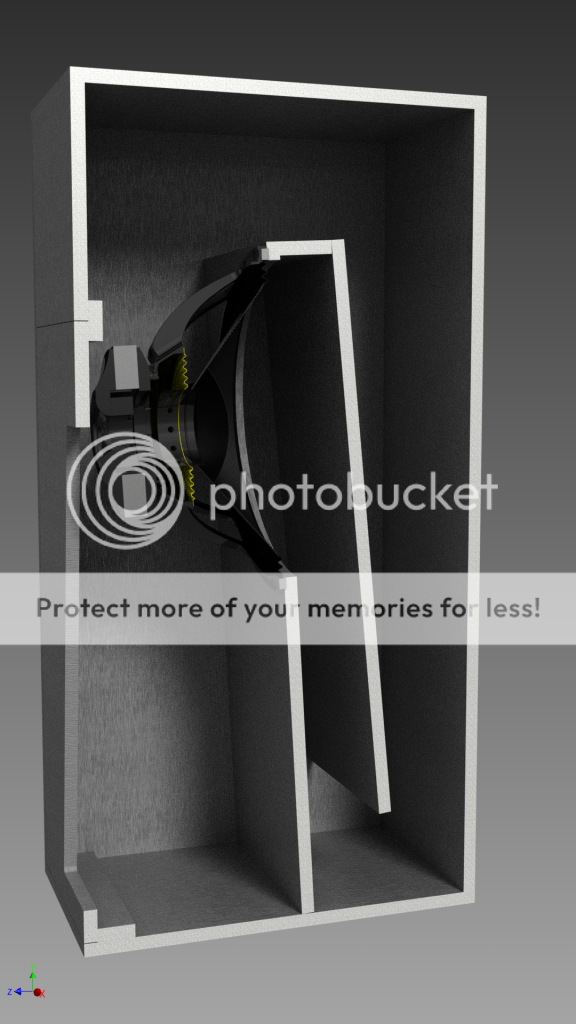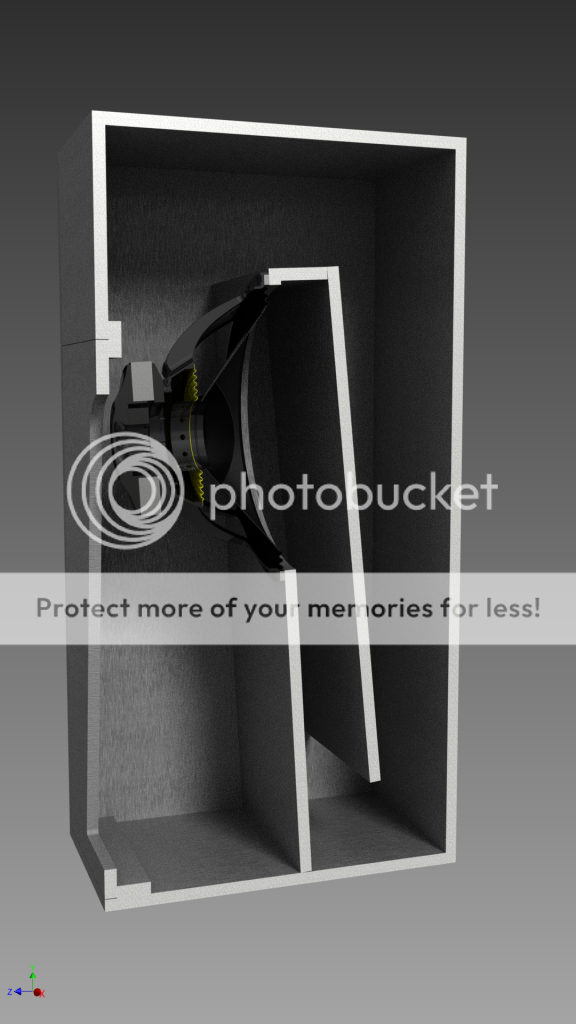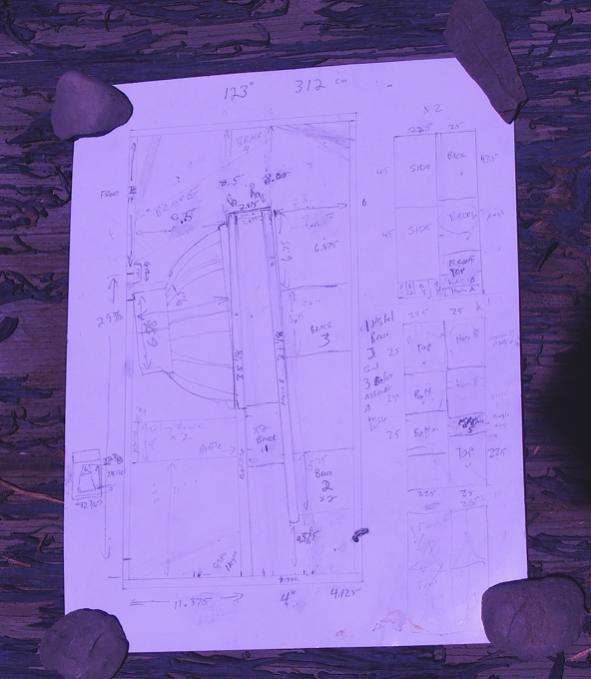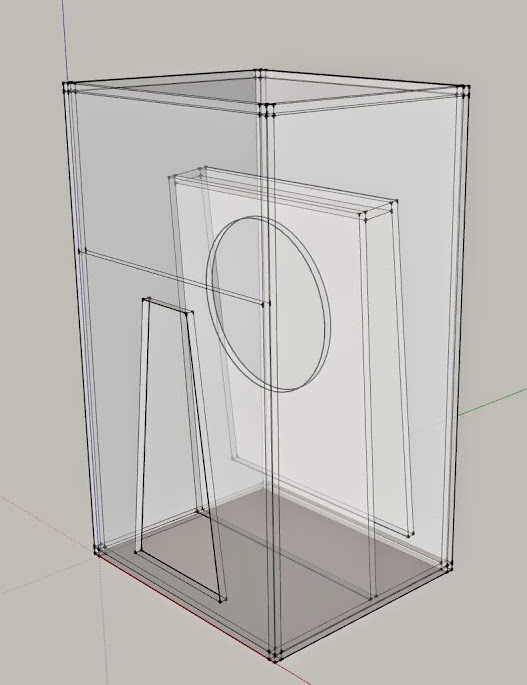In another thread, I shared my cooking skills with a QSC PLX3402. We've got to remember that these AES numbers are close to double a typical RMS rating that some of us are used to. Compressed pink noise w/6dB crest factor vs sine wave w/3dB crest factor, IIRC.
Edit: so, that would give the TBW an RMS rating of around 750W.
This is a few pages back, but I'm still confused by this. I've seen people use the same math elsewhere and I don't quite understand it. Hopefully somebody can either confirm my thoughts or point me to the flaw in my logic.
Ignoring for a moment the fact that the voice coil is cooled by motion which varies at different frequencies etc., the thermal power limit of the driver is defined by the wattage of heat it can dissipate continuously without getting too hot.
Crest factor describes the distribution of voltage in the signal, the ratio of the highest peak voltages to the average level. This really has nothing to do with the overall power. For a given power level, the RMS voltage will be the same.
Now in this regard isn't 6db crest factor pink noise at 1.5kw and a 3db crest factor sine wave at 1.5kw identical as far as thermal power dissipation goes?
It seems to me that if the manufacturer says this driver can continuously handle 1.5kw of 6db crest factor noise, shouldn't it handle 1.5kw of sine waves equally well?
Going back to the big picture, aren't higher crest factor signals more punishing for testing a driver considering that at the same power level the voltage peaks will be much higher?
Last edited:
It seems to me that if the manufacturer says this driver can continuously handle 1.5kw of 6db crest factor noise, shouldn't it handle 1.5kw of sine waves equally well?
No. A 1.5kW sine wave at a single frequency is 77.5 volts (at 4 ohms). The sum of two sine waves, at uncorrelated frequencies (say 40 and 60 Hz - a bassline and a kick, for instance), each at 38.75V also requires 77.5V to reproduce. The peaks will periodically align, requiring double the voltage. The two-tone signal has only 750 watts of average power, with 375 watts into each tone. A pink noise signal has more than two tones, but if it is compressed down to a 6dB crest factor it will have the same 750 watts of average power and require 77.5 volts to reproduce it.
In real music, that bassline may or may not be "continuous", and the kick sure as heck isn't (it has to go thump thump thump). And then there are harmnonics which further add to the peak voltgae to average power ratio.
1) A 1.5 kW peak is a 1.5kW peak, but a signal with only 3 dB crest factor contains twice the average power of a 6 dB crest factor signal.1)Now in this regard isn't 6db crest factor pink noise at 1.5kw and a 3db crest factor sine wave at 1.5kw identical as far as thermal power dissipation goes?
2)It seems to me that if the manufacturer says this driver can continuously handle 1.5kw of 6db crest factor noise, shouldn't it handle 1.5kw of sine waves equally well?
3)Going back to the big picture, aren't higher crest factor signals more punishing for testing a driver considering that at the same power level the voltage peaks will be much higher?
2) Yes, for a short period of time.
3) High crest factor signals are more mechanically "punishing" to a driver, low crest factor signals are more thermally "punishing". A low crest factor signal (such as a sine, or worse yet, square wave) centered near the excursion and impedance minima is the worst case from a thermal standpoint.
Although the BC18SW115-4 can easily withstand 3400 watt peaks, the voice coil will likely burn in a relatively short time if subjected to a signal with only 3 dB crest factor at 75.5 volts at Fb. At other frequencies, 75.5 volts may only result in a small fraction of the power dissipated in the voice coil, while the increased excursion helps "fan" the voice coil heat out of the magnet assembly.
Last edited:
Although the BC18SW115-4 can easily withstand 3400 watt peaks, the voice coil will likely burn in a relatively short time if subjected to a signal with only 3 dB crest factor at 75.5 volts at Fb. At other frequencies, 75.5 volts may only result in a small fraction of the power dissipated in the voice coil, while the increased excursion helps "fan" the voice coil heat out of the magnet assembly.
I don't recall either of my 18TBW100 ever producing an audible indication of hitting their mechanical limits, including in the minutes during my destructive test. In addition to running bass heavy music with an already high crest factor, I was pushing the iTech 6000 so that the clip indicator was lit fairly regularly, and then an additional 9 or 10 dB past that point in the last hurrah (so to speak).
Watching the load monitor for a period of time, I reckon the iTech can easily drive several of these drivers per channel with acceptable results. More economical in terms of rack space for sure.
Hi!
Looking at the amp pdf description:
http://www.crownaudio.com/media/pdf/amps/140318.pdf
I read 20mS burst...
Also at the back of the amp picture energy intake states 1750W 100~240V for IT6000
Regards,
Looking at the amp pdf description:
http://www.crownaudio.com/media/pdf/amps/140318.pdf
I read 20mS burst...
Also at the back of the amp picture energy intake states 1750W 100~240V for IT6000
Regards,
Last edited:
For this statement to be true, you must assume that the peak voltage is the same for both signals, correct?a signal with only 3 dB crest factor contains twice the average power of a 6 dB crest factor signal.
This seems to also be making the assumption that peak voltage is identical for the two different signals.No. A 1.5kW sine wave at a single frequency is 77.5 volts (at 4 ohms)
A pink noise signal ... compressed down to a 6dB crest factor will have 750 watts of average power and require 77.5 volts to reproduce it.
To clarify, when I say a "1.5kw signal", I mean average and not instantaneous peak. The point I was attempting to confirm is that unless you're discussing signal voltages, is the crest factor not irrelevant for long term thermal power handling?
I realize that most real world limiting is done with peak voltages, so I can see why the discussion is moving in that direction, but I am speaking only in terms of RMS voltage and average power. (RMS power being a meaningless term)
In that light, isn't saying a speaker can handle 1.5kw of 6db crest factor noise but 750w of sine waves still nonsense?
That said, does B&C rate their speakers 'nominal power handling' with instantaneous peak power of the 6db signal instead of its average power?
Last edited:
In that light, isn't saying a speaker can handle 1.5kw of 6db crest factor noise but 750w of sine waves still nonsense?
That said, does B&C rate their speakers 'nominal power handling' with instantaneous peak power of the 6db signal instead of its average power?
Whether it's nonsense or not, that's how speakers are rated. Not just B&C's - pretty much all of them. To push 750 watts of average power out of a 1500 watt amplifier, it's got to be turned up to some really serious clipping. In maybe 5 minutes, most amps (even the good ones) will shut down. It will draw a hell of a lot more than the rated AC draw, and breakers will trip. Getting 750 watts average power out of even a 3kW amp you need to turn it up to noticeable distortion. If you program material resembles what happens when you put your thumb on the end of the RCA cord, you just need to de-rate the speakers accordingly, and put some extra fans on the amp.
That is to say the continuous power ratings are based on peak instantaneous power for the signal?Whether it's nonsense or not, that's how speakers are rated. Not just B&C's - pretty much all of them.
Because using that math, the actual average power content based on the rms voltage of both signals would be 375 watts
Apologies for dragging this out, I'm trying to make sure I really understand it.
Last edited:
Originally Posted by weltersys
a signal with only 3 dB crest factor contains twice the average power of a 6 dB crest factor signal.
1) Yes.
2) For a "1.5kw signal" to average 1.5kw, the crest factor must be known. Regular pink noise has a crest factor of 12 dB, the EIA 426A band limited noise source used by most reputable woofer manufacturers has a crest factor of 6 dB, some manufactures still claim "RMS", which would imply a sine wave of "X" voltage in to the nominal impedance. A sine wave test is not really valid, as a frequency could be chosen where the impedance was high, resulting in very little power being drawn.
To make things a bit more "interesting", some manufacturers are now using band limited pink noise with a 12 dB crest factor for the power rating, a speaker passing that rating would handle only 1/4 (-6 dB) the average power of a speaker rated the same using the EIA 426A noise source.
3) For real world limiting to properly protect against both thermal and mechanical failure both RMS and peak limiting are required.
4) No. Most music has a crest factor well above 12 dB, which is 6 dB less average power than the EIA 426A noise source, which is 3 dB less average power than a sine wave. Some EDM music has as little as 3 dB crest factor in the sub 100 Hz range, it can burn up a voice coil just like a sine wave.
5)B&C uses the terms "nominal" and "continuous program" for power handling. For the "nominal" power handling rating the speaker must survive a set period of the 6 dB crest factor EIA 426A noise source. Peak power of "continuous program" is defined as 3 dB greater than the nominal rating.
As an analogy, think of a candle flame as a heat source. You can pass your finger through the flame rapidly, like musical transient peaks, and they won't even feel hot. Slow your finger down to 1/4 that speed (6 dB slower), like the EIA 426A noise source, and it will get hot. Cut the speed down in half again (3 dB) and your finger will start to blister. Leave your finger in the flame (0dB crest factor, like a square wave) and the skin will eventually char. Unlike a voice coil, which has no liquid cooling, your finger won't actually burn.
If all the above still does not make sense to you, actually try the candle experiment, it will become instantly obvious .
.
Art
a signal with only 3 dB crest factor contains twice the average power of a 6 dB crest factor signal.
Zettairyouiki,1)For this statement to be true, you must assume that the peak voltage is the same for both signals, correct?
2)To clarify, when I say a "1.5kw signal", I mean average and not instantaneous peak. The point I was attempting to confirm is that unless you're discussing signal voltages, is the crest factor not irrelevant for long term thermal power handling?
3)I realize that most real world limiting is done with peak voltages, so I can see why the discussion is moving in that direction, but I am speaking only in terms of RMS voltage and average power. (RMS power being a meaningless term)
4)In that light, isn't saying a speaker can handle 1.5kw of 6db crest factor noise but 750w of sine waves still nonsense?
5)That said, does B&C rate their speakers 'nominal power handling' with instantaneous peak power of the 6db signal instead of its average power?
1) Yes.
2) For a "1.5kw signal" to average 1.5kw, the crest factor must be known. Regular pink noise has a crest factor of 12 dB, the EIA 426A band limited noise source used by most reputable woofer manufacturers has a crest factor of 6 dB, some manufactures still claim "RMS", which would imply a sine wave of "X" voltage in to the nominal impedance. A sine wave test is not really valid, as a frequency could be chosen where the impedance was high, resulting in very little power being drawn.
To make things a bit more "interesting", some manufacturers are now using band limited pink noise with a 12 dB crest factor for the power rating, a speaker passing that rating would handle only 1/4 (-6 dB) the average power of a speaker rated the same using the EIA 426A noise source.
3) For real world limiting to properly protect against both thermal and mechanical failure both RMS and peak limiting are required.
4) No. Most music has a crest factor well above 12 dB, which is 6 dB less average power than the EIA 426A noise source, which is 3 dB less average power than a sine wave. Some EDM music has as little as 3 dB crest factor in the sub 100 Hz range, it can burn up a voice coil just like a sine wave.
5)B&C uses the terms "nominal" and "continuous program" for power handling. For the "nominal" power handling rating the speaker must survive a set period of the 6 dB crest factor EIA 426A noise source. Peak power of "continuous program" is defined as 3 dB greater than the nominal rating.
As an analogy, think of a candle flame as a heat source. You can pass your finger through the flame rapidly, like musical transient peaks, and they won't even feel hot. Slow your finger down to 1/4 that speed (6 dB slower), like the EIA 426A noise source, and it will get hot. Cut the speed down in half again (3 dB) and your finger will start to blister. Leave your finger in the flame (0dB crest factor, like a square wave) and the skin will eventually char. Unlike a voice coil, which has no liquid cooling, your finger won't actually burn.
If all the above still does not make sense to you, actually try the candle experiment, it will become instantly obvious
Art
Attachments
So I could not find cut sheets and what not and decided to draw it up myself.
I made the front hatch taller to make room for the TBW for the lower budget builds:

And then I was looking at the venting on the motor and wondering if this has been tried:


At any rate I'll be happy to finish it up with bracing and cut sheets if there's any interest.
I made the front hatch taller to make room for the TBW for the lower budget builds:

And then I was looking at the venting on the motor and wondering if this has been tried:


At any rate I'll be happy to finish it up with bracing and cut sheets if there's any interest.
Thanks for the kind words.WOW.....NeoD. I really need to learn how to use CAD. You always make these things look beautiful and you do it so easily.
Then if I knew how to do this I could better explain to others my ideas and future speaker plans.
This is pretty much why I taught myself to CAD. Start with Sketchup, there are tons of 10-20 minute video tutorials. The important thing when you are starting out to ensure you progress IMO is to avoid the stuff stuck in your head and use the tutorials to learn the technique and develop the skills so you can then deal with the ideas in your head. It'll save you lots of frustration in the end.
Thanks epa. I wish I could draw those baskets but I must admit I got them from B&C.real nice
did you draw the driver ,or did you found i on the web?
I guess it might work out if you cut out clearance the motor, but why do that when you can just make the hatch taller to move the strip of wood out of the way...TBW100 fits with stock dimensions.
I guess it might work out if you cut out clearance the motor, but why do that when you can just make the hatch taller to move the strip of wood out of the way...
No modification necessary, the TBW100 fits with Art's plans.
Sent from my iPhone using Tapatalk
These?No modification necessary, the TBW100 fits with Art's plans.

I'm pretty happy with my iNuke 3000DSP as well. The DSP feature provides more than enough control to tame any "TH" type of system. See attached for example, which is the measured response of my POC3 with DSP applied.
Nice work Brian, what driver did you use in your POC3?
- Home
- Loudspeakers
- Subwoofers
- Keystone Sub Using 18, 15, & 12 Inch Speakers

